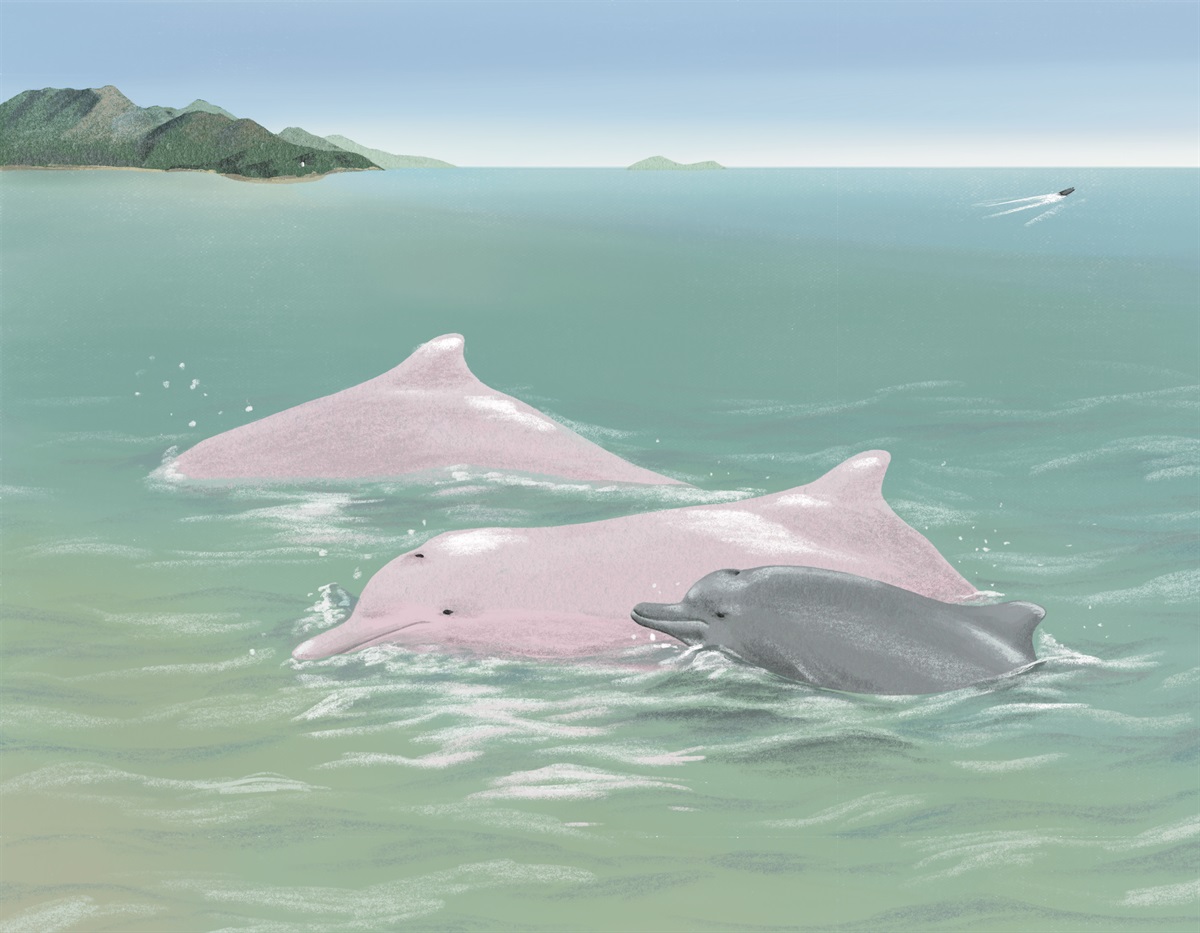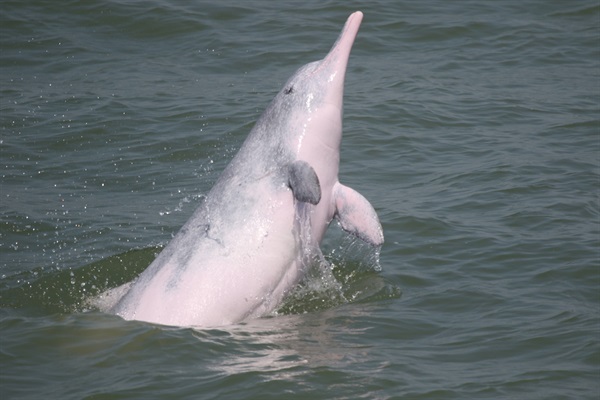Although the sea area of Hong Kong is small, we are lucky to have two residential species of cetaceans, Chinese White Dolphin and Finless Porpoise. The former mainly inhabits western waters, near the Pearl River Estuary, as part of the Pearl River Estuary population. As the brackish water often contains suspended sediments, which lower the visibility in the area, individuals of Chinese White Dolphin use echolocation to find their prey such as lion-head fish and croakers.

Despite being called the 'white dolphin', the new-born calves and adults of the Chinese White Dolphin are grey and pink in colour. So here comes a quick question – was the species wrongly named in the first place? Certainly not. As the calves grow up, the melanin that gives the grey colour slowly dissipates to reveal the white skin underneath. The pink appearance of the adults is caused by active body movement that leads to the expansion of blood vessels, just like the pink or red cheeks of a shy person. Another common name for this dolphin species is "Indo-Pacific humpback Dolphin", indicating its slightly raised back under the dorsal fin.
Through the shape, scar and spot pattern on the dorsal fin, scientists are able to identify individual dolphins. This allows the scientists to observe the social behaviour of the Chinese White Dolphin, and it was revealed that its social structure was highly fluid. An average number of 3 to 4 individuals of Chinese White Dolphin could be found in a social group, and the largest recorded group was made up of 23 individuals. In Hong Kong, the longest living Chinese White Dolphin was 38 years old.
The Government has designated Sha Chau and Lung Kwu Chau Marine Park, The Brothers Marine Park, and Southwest Lantau Marine Park to protect Chinese White Dolphin. In addition, to study the cause of death, biology, and ecology of this dolphin, AFCD has been cooperating with the Ocean Park Conservation Foundation, Hong Kong to investigate and collect samples from deceased dolphins. If you ever encounter a stranded dolphin or find a carcass, you may call 1823 to report the case to AFCD.
| Family | Delphinidae |
|---|---|
| Scientific Name | Sousa chinensis |
| Adult Size | About 2.7 m in length |
| Habitat | Estuary |
| IUCN Red List Status | Vulnerable |
